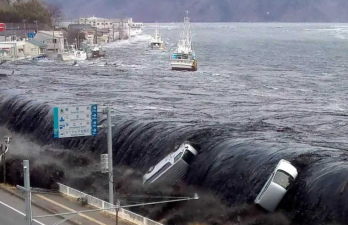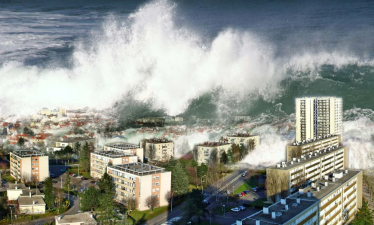The Science of Tsunamis: Causes and Effects
Tsunamis are gravity waves, similar to common surface waves, but their wavelengths can reach thousands of kilometers.

- Main Causes
- Wave Characteristics
- "Downwelling" tsunamis: Certain tectonic earthquakes cause a large, rapid subsidence of the seafloor crust. Seawater initially surges into the sudden subsidence, causing a large accumulation of seawater above it. When the influx of seawater encounters resistance on the seafloor, it returns to the surface, generating compression waves, forming long, large waves that propagate and diffuse. Tsunamis caused by this type of downwelling crustal movement initially manifest as abnormally low tides on the coast. The 1960 Chile earthquake tsunami belongs to this type.
- "Uplift" tsunamis: Certain tectonic earthquakes cause a large, rapid rise in the seafloor crust, lifting the seawater along with the uplift. A large amount of seawater accumulates above the uplift. Under the influence of gravity, the seawater must maintain an equipotential surface to achieve relative equilibrium, causing it to spread outward from the source, forming a massive wave. This type of uplift-type seafloor crust movement generates tsunami waves that first manifest as abnormally high tides on the coast. The tsunami caused by the magnitude 7.7 earthquake in the Central Sea of Japan on May 26, 1983, belongs to this type.

- The earthquake's "elastic" energy must be sufficiently strong.
- The two determining factors: the earthquake must be of high intensity, meaning its magnitude is high enough; and the earthquake must occur at a shallow depth. For example, the focal depth of the 2011 East Japan tsunami was only 10 kilometers. Therefore, a large amount of seismic energy is directly released into the seawater.
- The water above the epicenter is deep enough:




